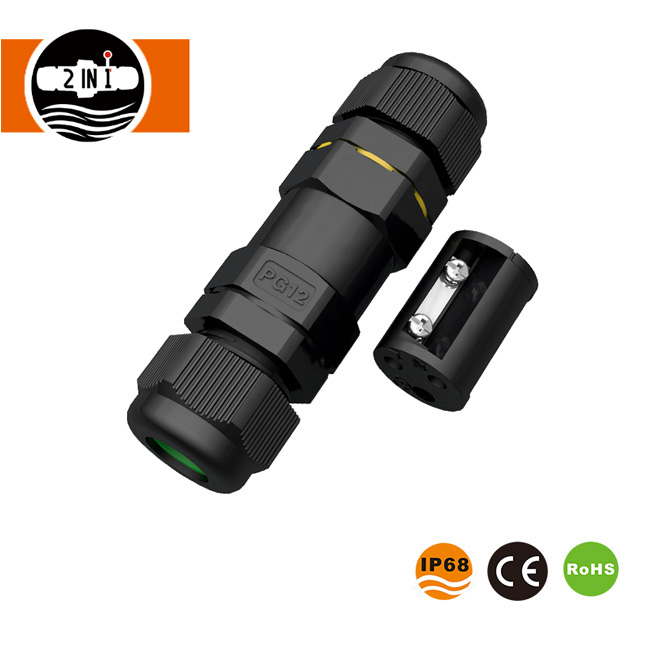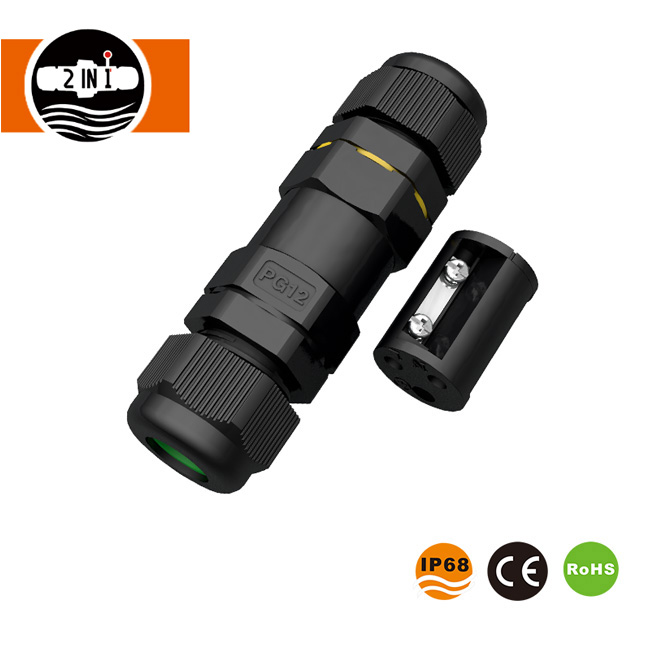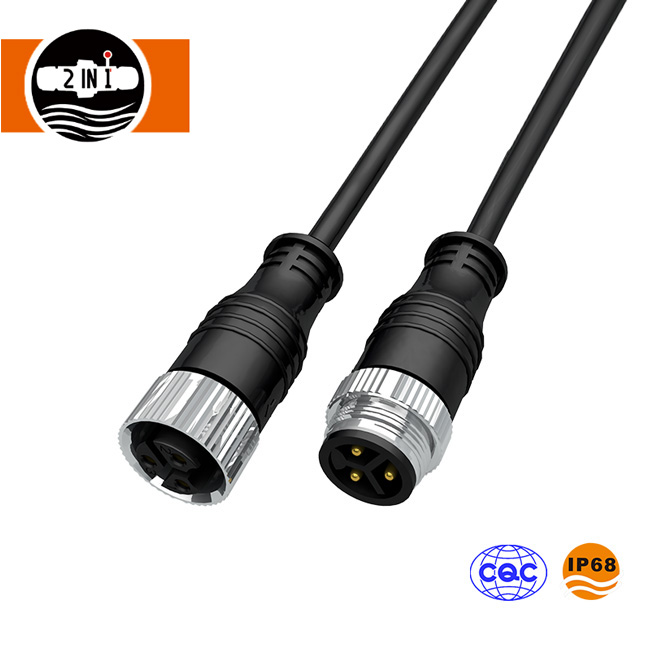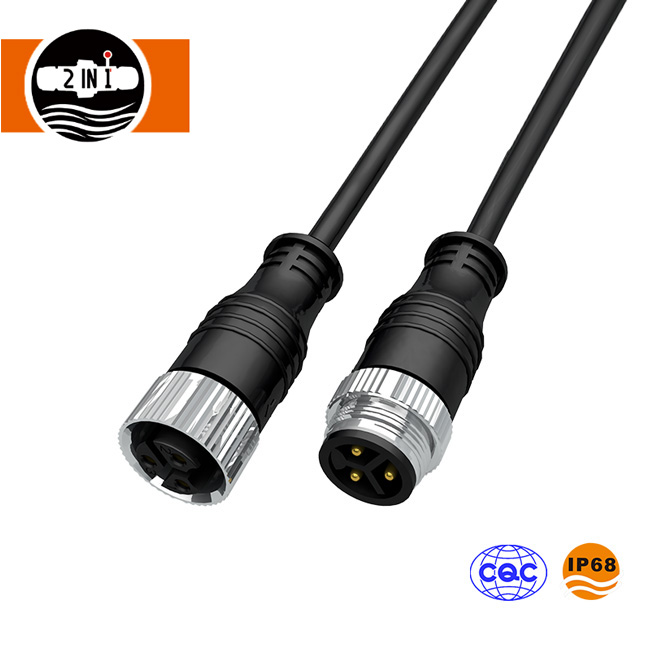Screw connectors are fundamental components in electrical systems, providing reliable and secure connections for a wide range of applications. Whether you're an electrician, a DIY enthusiast, or someone working on industrial projects, understanding how to use screw connectors correctly is crucial for safety and performance. This guide will walk you through everything you need to know about screw connectors, including their types, key features, step-by-step usage instructions, and best practices. Additionally, we’ll highlight the technical specifications of 2 IN 1 Technology’s premium screw connectors, designed to meet the highest standards of durability and efficiency.

What Is a Screw Connector?
A screw connector is a type of electrical connector that uses a screw mechanism to clamp and secure wires. These connectors are widely used in residential, commercial, and industrial wiring systems due to their simplicity and effectiveness. They ensure a stable connection by applying mechanical pressure to the conductor, preventing loose connections that could lead to overheating or electrical failures.
Types of Screw Connectors
Screw connectors come in various forms, each suited for specific applications:
-
Terminal Blocks: Used to connect multiple wires together or to secure wires to a surface.
-
Wire Nuts: Twist-on connectors that use a screw-like thread to hold wires together.
-
Lug Connectors: Often used for heavier cables and secured with a screw.
-
Panel Mount Connectors: Designed for mounting on electrical panels or enclosures.
Key Features of 2 IN 1 Technology Screw Connectors
At 2 IN 1 Technology, we engineer our screw connectors to deliver superior performance and safety. Here are some of the standout features of our products:
-
High-Quality Materials: Made from premium copper and plated with tin or nickel to resist corrosion.
-
Fire-Resistant Housing: Constructed with heat-resistant materials to prevent melting or burning.
-
Easy Installation: Designed with user-friendly features such as ergonomic caps and clear tightening indicators.
-
Wide Compatibility: Suitable for various wire gauges and types, including solid and stranded wires.
Technical Specifications
Below is a detailed overview of the technical parameters for our screw connectors:
Table 1: General Specifications
|
Parameter
|
Specification
|
|
Rated Voltage
|
Up to 600V
|
|
Current Rating
|
20A - 100A
|
|
Operating Temperature
|
-40°C to +105°C
|
|
Wire Range
|
0.5 mm² to 35 mm²
|
|
Material
|
Copper with Tin/Nickel Plating
|
|
Insulation Material
|
Polyamide (PA66)
|
|
Certifications
|
UL, CE, RoHS Compliant
|
Table 2: Product Variants and Their Specifications
|
Model Number
|
Wire Size (mm²)
|
Current Rating (A)
|
Voltage Rating (V)
|
Application
|
|
SC-T202
|
0.5 - 4
|
20
|
600
|
Residential Wiring
|
|
SC-T205
|
4 - 10
|
40
|
600
|
Commercial Use
|
|
SC-T210
|
10 - 25
|
70
|
600
|
Industrial Machinery
|
|
SC-T215
|
25 - 35
|
100
|
600
|
Heavy-Duty Applications
|
Step-by-Step Guide: How to Use a Screw Connector
Using a screw connector correctly is essential for achieving a safe and lasting connection. Follow these steps:
-
Select the Right Connector: Choose a screw connector that matches the wire gauge and current requirements of your application. Refer to the technical tables above for guidance.
-
Prepare the Wires: Strip the insulation from the wire ends, exposing about 10-15mm of bare conductor. Ensure there are no frayed strands.
-
Loosen the Screw: Use a screwdriver to loosen the clamping screw in the connector just enough to insert the wire.
-
Insert the Wire: Place the bare wire into the terminal hole until it reaches the stop. Make sure the wire is fully seated and that no bare conductor is exposed outside the connector.
-
Tighten the Screw: Firmly tighten the screw to clamp the wire in place. Avoid over-tightening, as this may damage the wire or the connector.
-
Tug Test: Gently pull on the wire to verify that it is securely held.
-
Inspect the Connection: Ensure the connection is tight and that there are no signs of damage or stress on the wire.
Best Practices for Using Screw Connectors
-
Always de-energize the circuit before working on connections.
-
Use the correct screwdriver size to avoid stripping the screw head.
-
Do not mix different metals (e.g., copper and aluminum) unless using a compatible connector.
-
Regularly inspect connections for signs of wear, corrosion, or loosening.
Why Choose 2 IN 1 Technology Screw Connectors?
Our screw connectors are manufactured with precision and rigorously tested to ensure they meet international safety and performance standards. We focus on delivering products that offer:
-
Exceptional electrical conductivity.
-
Long-term reliability even in harsh environments.
-
Ease of use for professionals and beginners alike.
Conclusion
Screw connectors are indispensable for creating safe and efficient electrical connections. With the right product and proper technique, you can ensure your projects are both reliable and compliant with safety standards. At 2 IN 1 Technology, we take pride in producing high-quality screw connectors that you can trust for any application.
We invite you to experience the difference that professional-grade screw connectors can make. For more information or to place an order, please reach out to our sales team at sales@cn2in1.com. Let’s build something safe and reliable together!
 English
English  Español
Español  Português
Português  русский
русский  Français
Français  日本語
日本語  Deutsch
Deutsch  tiếng Việt
tiếng Việt  Italiano
Italiano  Nederlands
Nederlands  ภาษาไทย
ภาษาไทย  Polski
Polski  한국어
한국어  Svenska
Svenska  magyar
magyar  Malay
Malay  বাংলা ভাষার
বাংলা ভাষার  Dansk
Dansk  Suomi
Suomi  हिन्दी
हिन्दी  Pilipino
Pilipino  Türkçe
Türkçe  Gaeilge
Gaeilge  العربية
العربية  Indonesia
Indonesia  Norsk
Norsk  تمل
تمل  český
český  ελληνικά
ελληνικά  український
український  Javanese
Javanese  فارسی
فارسی  தமிழ்
தமிழ்  తెలుగు
తెలుగు  नेपाली
नेपाली  Burmese
Burmese  български
български  ລາວ
ລາວ  Latine
Latine  Қазақша
Қазақша  Euskal
Euskal  Azərbaycan
Azərbaycan  Slovenský jazyk
Slovenský jazyk  Македонски
Македонски  Lietuvos
Lietuvos  Eesti Keel
Eesti Keel  Română
Română  Slovenski
Slovenski  मराठी
मराठी  Srpski језик
Srpski језик 





